Traditionally, food makers have relied on salt to enhance flavor and prolong shelf-life. But that’s all changing thanks to revolutionary—and healthier—new ingredients and technologies.
Key takeaways:
- 70% of our dietary sodium intake comes from prepared, processed, and packaged foods, and too much sodium can lead to high blood pressure, heart and kidney disease, and obesity.
- Manufacturers use salt to enhance foods’ flavor, texture, and shelf-life, but the FDA has asked them to help Americans eat healthier by reducing the amount of sodium in their products.
- Food makers are trying everything from alternative ingredients to new technologies to cut down on the amount of salt in their formulations.
- Using micro-sized salt particles in food, which is how MicroSalt®’s technology works, provides an intensely salty flavor with only half the sodium.
Reducing our dietary sodium intake is one of the best things Americans can do to improve our health. And food manufacturers have an important role to play in helping us cut back on the amount of salt we consume. Unfortunately, many manufacturers continue to add high amounts of salt to their foods, which means that cutting back on sodium can be a challenge, especially if your diet consists mainly of processed, packaged, and prepared foods.
Due to the fact that health problems like obesity, heart disease, kidney disease, and high blood pressure are reaching epidemic proportions in the United States, the FDA and other government organizations are encouraging food makers to lower the amount of sodium used in their products. The problem for manufacturers is finding ways to cut back on the salt while still maintaining the product quality and flavor people love. Is that even possible?
The answer, fortunately, is “yes!” Modern manufacturing methods can reduce the amount of salt in packaged and processed foods without sacrificing flavor. And in many cases, production processes don’t even have to be disrupted to accommodate these healthy changes. This guide will walk through this challenge for the food industry and how manufacturers are starting to use new technology to help reduce the amount of sodium in their formulations.
Why does food manufacturing rely on salt?
According to the FDA, over 70% of the country’s dietary sodium intake comes from salt that gets added to foods during commercial manufacturing and preparation processes. This added salt is sodium chloride or sodium glutamate, not the sodium that occurs naturally in food.
Salt is not only added to food to improve the flavor, it’s also used to maintain and improve the texture of some foods and to ensure that food has a longer shelf-life. Salt is also very cheap, making it an appealing seasoning for budget-conscious food manufacturers.
Cheese production is a good example of why reducing sodium can be such a challenge in food manufacturing. For cheese to maintain its taste, texture, and shelf-life, a certain amount of salt is necessary. Similarly, meat products rely on salt for taste, shelf-life, water content, and texture. Salt also regulates how soluble proteins are in meat, which plays a key role in meat processing.
New technologies for better food formulations
The government and industry have been searching for new ways to season and preserve food without using so much extra salt. In October 2021, the FDA released new guidelines for processed, packaged, and prepared foods in hopes of reducing their overall sodium content by 12%. The agency’s plan includes setting industry targets, monitoring the food supply and progress, and engaging with all involved stakeholders. For now, however, these targets are strictly voluntary, so not all manufacturers are participating.
For those that are, there are several different ways to reduce the amount of sodium in their products. Compounds such as potassium chloride, potassium lactate, calcium chloride, and magnesium sulfate, serve as salt substitutes that provide similar results. Unfortunately, they don’t work well in all foods, and some of them aren’t much healthier than sodium chloride. New technologies like ultrasound are being researched to help diffuse salt into meat products or alter meat’s texture. One study from Washington State University used microwave-assisted thermal sterilization (MATS) to lower sodium amounts while maintaining food’s taste and safety.
The issue with many of these strategies, especially in the case of alternative ingredients, is that there always seems to be a significant sacrifice in terms of flavor or texture. And that’s a problem. Because, as a study published in the journal Foods reported, “consumer acceptability in terms of texture, appearance and taste” is the biggest challenge faced by food reformulation efforts.
One effective way to lower sodium without sacrificing flavor is with micronized salt. These tiny crystals dissolve immediately in the mouth, providing a significantly saltier flavor than ordinary salt crystals. Meaning you can get the taste you crave while using much less salt.
This approach is how MicroSalt® has been able to reduce sodium content by 50% while delivering an intense salty taste in our products. Salt particles are micro-sized (100 times smaller than regular salt particles), and they dissolve right away, so consumers’ taste buds recognize the taste as twice as salty as normal salt.
MicroSalt® tastes like salt because it is salt. It’s 100% natural with 50% less sodium and no salt substitutes like potassium chloride. It’s perfect for chips, bars, cookies, crackers, nuts, pasta, peanut butter, and more. This amazing technology will change the amount of salt Americans consume, helping them maintain healthier diets.
Get in touch with MicroSalt® to learn more
Curious about our revolutionary patented technology? Ready to try our SaltMe®! chips? Contact the MicroSalt® team today to find out more about our low-sodium solution that proves you don’t have to sacrifice flavor for good health. We’re ready to talk.




